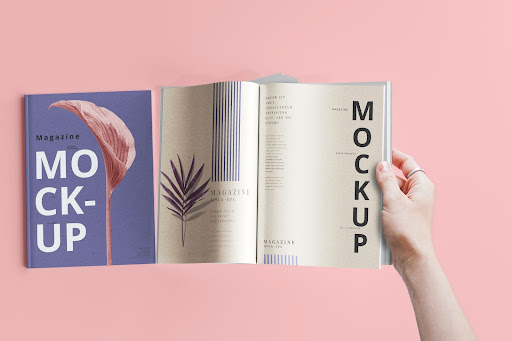Booklets are a great way to help boost your business or promote your personal brand. Booklets can be filled with writing and art. They can also be filled with information about your company and given away at events and conferences. Booklet printing in Los Angeles is easy and cost-effective. There’s no reason you can’t use booklets to help your company expand and fulfill its purpose. As long as your printed booklets are designed well, they can help you explore new ways to grow your brand and expand your business.
Planning
Before you jump right into making your booklet, you’ll need to properly plan it out first. Planning includes a variety of steps, all of which help your design work without having to make endless edits.
Outline
Outlining your booklet is perhaps the most important step in design. When creating your booklet, think about what purpose you want it for. Is it an art book to sell? A series of articles about your business? A more detailed information source than a brochure? The outline for each will differ, and it’s important that the content flows properly. Your outline doesn’t have to be too detailed, but you should know where you’re going to put your images, text, and other graphics so it all works together.
Choosing Typeface and Colors
The aesthetic of your booklet is important. You’ll need to choose a typeface that is both easy to read and pleasing to the eye. Fancy fonts can be used in titles and other smaller sections of text, but the majority of your font should be simple. Make sure that you keep the size of the font and the headers consistent throughout.
Color choice is just as important as font choice. You’ll want to choose a color palette that compliments the colors of your logo or other designs. If you have too many contrasting colors, it can be confusing and annoying to look at. Having a color and font combo that go well together with your other printed materials also helps you maintain brand integrity.
Page Size and Order
Most printing companies can print your booklet in a variety of sizes. The size you want your pages to be can also depend on what it’s used for. If you’re planning on selling your booklets, you’ll likely want a larger size to help make them more marketable. If you’re just looking to spread some information about yourself or the company, a smaller size is useful and can be packed up for conferences and events more easily.
Photo by Rich Tervet on Unsplash
Design for Print
There’s a big difference between designing something for the web and designing something for print. When creating your booklet’s design, you’ll want to ensure that the design elements are primed for printing.
Margin and Bleed
Printers and cutters have a certain margin of error that needs to be accounted for. When you design your pages, it’s important to leave not just a margin on the sides but a portion of bleed as well. When the material is printed and cut, there’s a possibility that part of the page is hidden or removed.
Adding bleed allows you to anticipate this and ensure that the content on your pages remains intact. For written material, this often means ensuring that the margins are large enough to prevent words from being cut off. Artwork can be placed closer to the center of the page to avoid any damage. Artwork that takes up a full page should include a large enough background that can cover the margin and bleed area without the risk of losing any main content.
CMYK
Computer screens and printers use different spectrums of light to create colors. Computer screens operate on the RGB spectrum, meaning they filter all colors through the red, green, and blue lights. Printers, however, operate on the CMYK spectrum, using cyan, magenta, yellow, and black ink to create all the colors. If you design your booklet using RGB for your colors, you’ll get a discolored print that won’t look like it does on the screen. When designing your booklet, you want to make sure your graphics are configured with the CMYK settings so that the printed colors will match what you want.
Image Quality
Images used on the internet can be, and often are, posted at a lower quality. This is often used to help avoid recaptures of the image. Computer screens are also better equipped to show lower-quality images without making them too difficult to see. If you use that same quality level for a printed image, however, it will come out distorted and blurry. When printing a booklet, make sure that you set all images and other graphics to at least 300 dpi. Otherwise, your printed booklet could do more harm than benefit to your company.
The Proof
When printing any kind of material, it’s always a good idea to get a proof. A digital proof can be used to ensure that everything is formatted correctly and that there are no grammatical or design errors. A physical proof is necessary to ensure that the images are printed out in the proper colors and quality and that nothing was cut off in the printing process. If you don’t check the proof of your booklet before ordering a whole stack, you could end up with a pile of unusable books.
Booklet Printing in Los Angeles
If you want high-quality booklet printing in Los Angeles, trust Guru Printers to get the job done. Our company is devoted to helping you and your company grow and expand. We can print booklets for you quickly and efficiently, helping you save time and money so you can focus on developing your business. To begin printing your booklet, start an online order through our shop or give us a call at (213)-320-4865 for additional help.

Leave a Reply